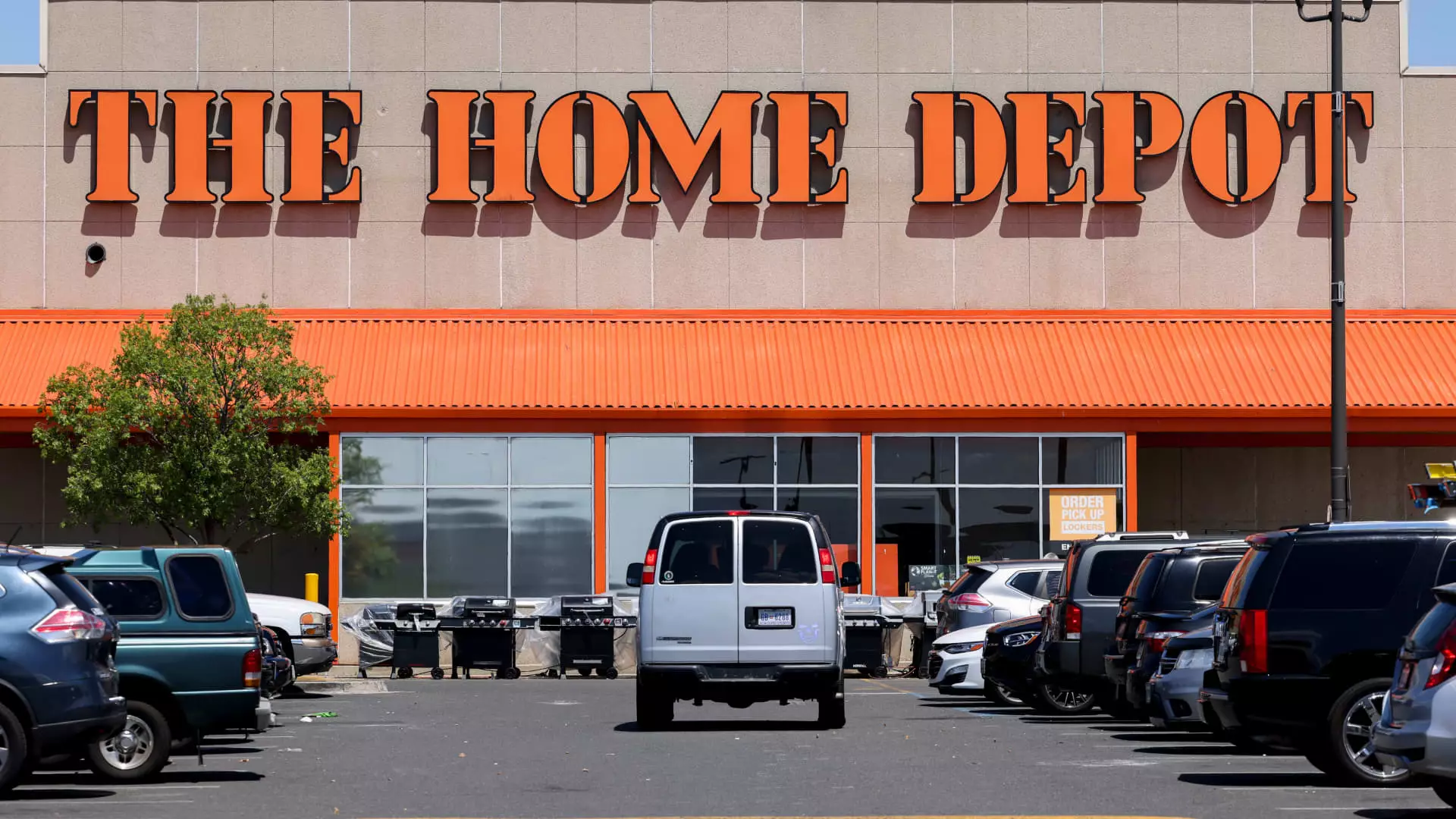Home Depot experienced a tumultuous 2024, characterized by heightened interest rates and a consumer base wary of making significant expenditures. The home improvement industry, heavily reliant on robust consumer confidence and stable borrowing costs, faced apparent headwinds in the early months of the year. As interest rates soared, potential clients became cautious, hesitating to engage in large-scale home improvement projects. The prevailing economic climate cast a long shadow over Home Depot’s stock performance and overall market sentiment.
Despite the initial challenges, signs of recovery began to emerge as the year unfolded. The pivotal moment occurred in March, when speculation surrounding potential Federal Reserve interest rate cuts fueled a renewed sense of optimism among investors. Yet, this initial rally was met with skepticism by mid-year. The anticipated rate cuts, designed to stimulate economic activity, were not enough to sustain the initial gains, and investor expectations had to recalibrate yet again by May.
The real inflection point for Home Depot’s stock occurred in September when the Federal Reserve initiated its monetary easing strategy with a robust 50 basis point rate cut. This development created a ripple effect throughout the housing market, which had seen hitherto low turnover rates—the lowest in 30 years. Following this key event, Home Depot’s stock experienced an upward trajectory, reaching an all-time intraday high of approximately $440 on November 26.
However, the stock was not immune to volatility, retracting over 11% shortly thereafter, bringing its trajectory back into perspective. This retrenchment occurred while the S&P 500 index remained relatively flat, illustrating the unique pressures Home Depot faced amidst an overall stable index environment. Notably, despite these fluctuations, influential market figures, including Jim Cramer, continued to endorse Home Depot as a core holding, underscoring a sentiment of cautious optimism for the retailer.
Year-to-Date Performance and Market Position
By the end of 2024, Home Depot’s stock had recorded a year-to-date increase of 12%. This performance, coupled with a forward price-to-earnings ratio of 25 compared to its five-year average of 21.5, reflected a potentially undervalued position in the stock market, offering a compelling entry point for investors. Analysts project a price target of $440 per share, projecting further upward mobility based on the anticipated easing of mortgage rates and a recovery in housing turnover.
Increasing mortgage rates continued to exert pressure throughout the year, creating a lag in housing formations and home sales. This delay stifled Home Depot’s growth potential as many consumers postponed home improvement projects in light of larger economic challenges. However, the broader home improvement market, supported by a backlog of deferred upgrades, stood ready for a resurgence, setting the company up for future success.
Looking Ahead to 2025: Signs of Optimism
As Home Depot moves into 2025, early indicators suggest a return to a more favorable market environment for home improvement businesses. The company’s third-quarter results, reported in mid-November, were viewed as an encouraging sign that it had weathered the worst of 2024 and was positioned for a rebound. Analysts anticipate a revival in demand for home renovations driven by falling mortgage rates. This demand is expected to largely stem from the necessity of upgrades to older homes rather than an influx of newly constructed residences.
The Federal Reserve’s projections of additional rate cuts in 2025 could further catalyze this anticipated recovery, supporting an overarching trend where home improvement companies typically thrive as borrowing costs diminish. As interest rates potentially drop below the critical threshold of six percent, Home Depot’s comparable sales figures could return to growth, significantly reversing the impacts experienced during the 2024 downturn.
Despite these positive indicators, challenges remain. If long-term bond yields continue their upward trend, they could further delay the recovery trajectory for Home Depot and trigger renewed performance pressures. Additionally, potential tariff complications arising from the company’s exposure to international markets, particularly Mexico, Canada, and China, may influence operations and pricing strategies. Nevertheless, Home Depot’s strong domestic sourcing—more than half of its product offerings come from the U.S.—provides a cushion against such external pressures.
As 2025 approaches, Home Depot stands as a case study in resilience, demonstrating how a retailer can navigate a tough economic landscape with strategic foresight and adaptability. The path forward is paved with challenges, but the chances for recovery and growth remain compelling as the home improvement sector readies itself for what could be an enthusiastic rebound.

